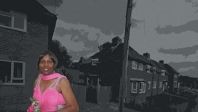Contemporary Fiction
As a small boy, Alex becomes ensnared in the schemes of his mother, Cathlean, as she seeks to entrap a white British soldier, John, and “marry up” to improve her status in life. Her plan comes to fruition when John becomes obsessed with his black wife, marries her, then takes her and her son away from her native country of Belize to live in England. Cathlean becomes the society woman in England but begs her husband to return to Belize so she can show off her new status to her friends and fellow “good-time” girls. They return ten years later, but an unhappy Alex seeks solace in the arms of Sherrette. They fall head over heels but soon find their own problems as fast-paced revelations affect their fragile relationship. Told in a first-person view of life in Dangriga, Belize, young Alex’s story reflects on the color of his pain as he seems to bear the brunt of Cathlean’s selfish brand of pain that she calls love.
Excerpt
Prologue
Present-Day Dangríga
Stann Creek District
Belize, Central America
Friday night, and the plain pine coffin stood on three unpainted sawhorses in the middle of the floor. Mourners murmured among themselves as they gathered under the white tent and stood directly in front of the coffin looking down at the almost angelic face of the deceased. A copper penny had been placed on top of each of the deceased’s eyelids in true Garífuna fashion. The toes of the new white socks had been attached together with a shiny safety pin; that too was a Garífuna tradition, origin unknown. The copper pennies were vaguely representative of the “toll” that the dead would have to pay to get a pass from Saint Peter into heaven. Yes, you couldn’t always tell, but Garífunas, one of which the deceased was, believed in heaven, hell, and an afterlife.
Sure, they dabbled in Obeah, the Belizean-African system of spells, hexes curses, and magic, and they regularly participated in Dugú, a voodoo-like healing ritual, in the Dabúyabah (Temple) to appease the spirits, but they wanted to make absolutely sure the deceased paid their way into heaven. They, functioning in the shadowy, dual world of Christianity and spiritualism, wanted to make sure that all bases were covered, just in case the deceased needed help to get to meet their maker.
Directly to the right of the coffin sat a woman in a wheelchair, a tragic figure, her head bent and sobbing or at times wailing and cursing at God, blaming him for the loss of the deceased. An average, nondescript gentleman stood awkwardly behind her, talking soothingly to her, rubbing her shoulders and back, trying in vain to comfort her.
Another male, this one a stranger, stood near the inside entrance of the tent, shuffling from one foot to the other, twisting a beat-up brown fedora between gnarled hands. He seemed ill at ease, reeking of marijuana and rum; he too was sobbing pitifully. Some people whispered to each other, wondering who he was, what his connection to the deceased was, and why he was there, but nobody was brave enough to ask him. The few who knew who he was would not satisfy the curiosity of those clueless to his identity.
To complete the tableau of mourners, near the front, just to the left of the coffin, was a young girl of about fifteen or sixteen years of age, beautiful but clearly wracked with sorrow, with head bowed as she shrieked in agony. You could tell from looking at her that she was hugely pregnant, like she was about eight and a half months along. Many of those present wondered whether she would last through the funeral or if she would have to be rushed to the hospital even before the night was over. She was quite literally “ready to pop” and deliver her baby, but some were reassured because they saw that Mamma Graciela, the local midwife known for her magic fingers and calm demeanor, even in breech-birth situations, was in the crowd. They were confident that she would be able to handle things or whatever complications would arise.
A local band kept a lively flow of Punta music and other favorites going; people were nodding their heads and shaking their bodies to the sounds, even the non-Garífunas: Kriols, Indians, Spanish, or gi-yows as they were called. Papa Deuce had his card table set up in a corner and was doing a brisk business at four different tables at a dollar buy-in; one table was dedicated to the dice game “under or over,” the second to five-card Pitty Pat, the third to checkers, and the fourth to a cutthroat game of dominoes, or “bones.” The domino table drew the largest crowd as gleeful players loudly yelled “Domino!” as they slapped winning tiles to the appropriate end of the domino board.The louder the slap at the placing of that final tile, the more in-your face the win and temporary bragging rights until that winner was taken down by the next challenger, and so on. Marty, the most recent winner, taunted Louis as he slammed the winning domino tile down.
About the Author
MELISA E. ARNOLD was born in Dangriga, Belize, Central America, and has been writing stories since she was a young girl. Her family says she always created stories and always won essay-writing competitions in school. She is a thrice-published poet but has always felt that she had at least “one great novel” in her that needed to be written. This book is the result of her collaboration with fellow Belizean expatriate Alexander Cassanova, with whom she discovered she had much in common as they make their way in their new country of residence, the United States of America. Ms. Arnold resides in Los Angeles, California.
Contact Links
Purchase Links





No comments:
Post a Comment